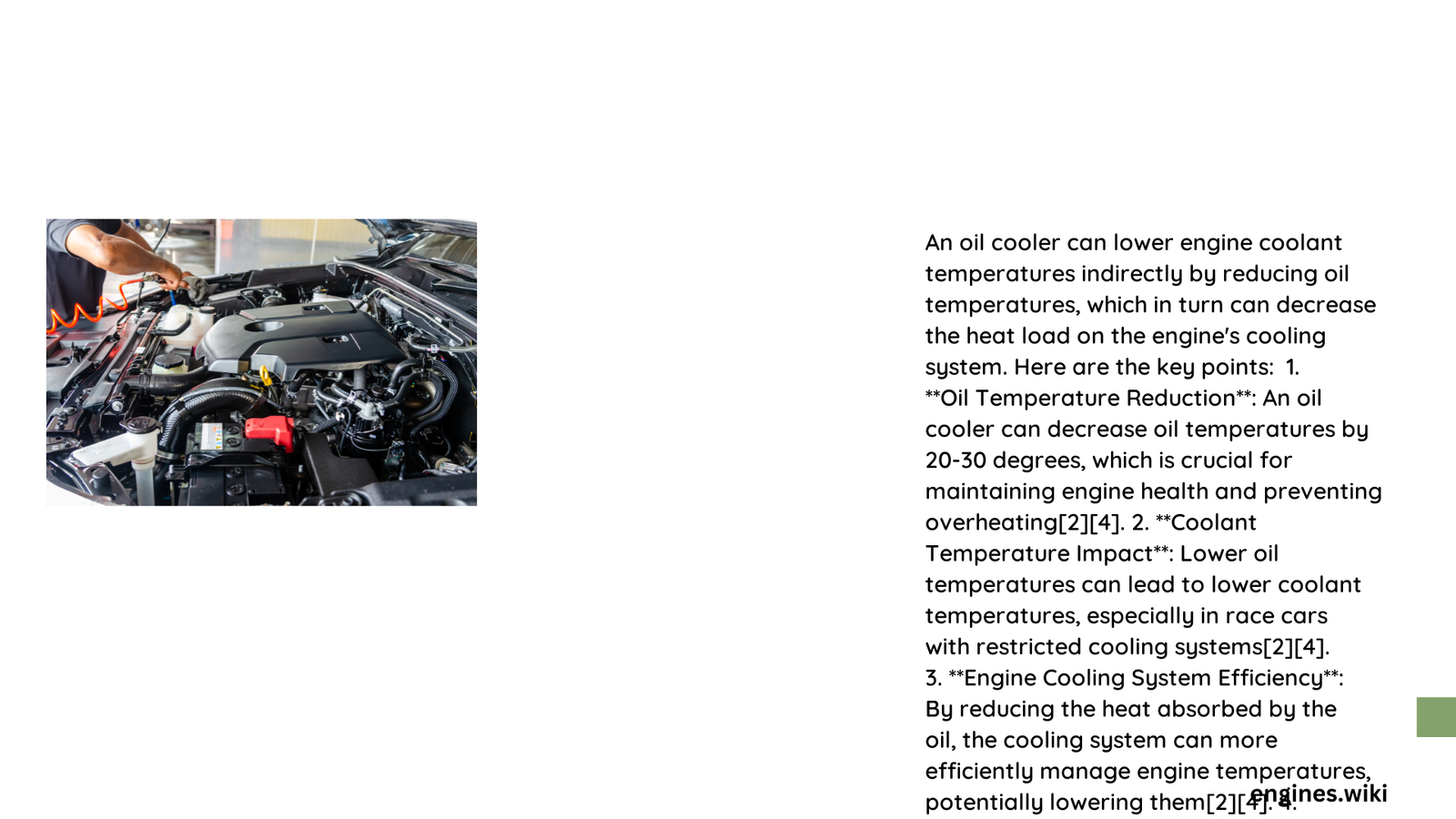An oil cooler is a critical automotive component designed to manage engine oil temperatures by dissipating excess heat, preventing potential thermal damage, and maintaining optimal engine performance. By strategically reducing oil temperatures between 20-40°F, oil coolers protect engine components, enhance lubrication efficiency, and mitigate potential mechanical stress across various engine configurations.
What Causes Engine Temperature Fluctuations?
Engine temperature variations result from multiple complex factors:
| Factor | Temperature Impact | Risk Level |
|---|---|---|
| Engine Load | High stress increases heat | High |
| Ambient Temperature | External environment affects cooling | Medium |
| Driving Conditions | Stop-and-go vs. highway driving | Variable |
How Do Oil Coolers Reduce Engine Temperature?
Oil coolers function through two primary mechanisms:
- Air-Cooled Systems
- Utilize airflow for heat dissipation
- Cost-effective solution
-
Best for moderate performance applications
-
Liquid-Cooled Systems
- Integrate with engine’s coolant system
- More consistent temperature management
- Superior for high-performance scenarios
What Temperature Ranges Indicate Potential Engine Stress?
Critical temperature thresholds for engine oil include:
- Normal Operating Range: 180°F – 260°F
- Warning Zone: 260°F – 300°F
- Critical Overheating: Above 300°F
Performance Implications of Temperature Management
Effective temperature control delivers multiple benefits:
- Reduced mechanical wear
- Enhanced lubrication performance
- Extended engine component lifespan
- Improved overall engine efficiency
Which Engines Benefit Most from Oil Coolers?
Different engine types experience varying temperature challenges:
- Turbocharged Engines
- Higher heat generation
- More complex cooling requirements
-
Critical need for precise temperature management
-
Naturally Aspirated Engines
- Lower baseline temperatures
- Still benefit from consistent cooling
- Moderate temperature control needs
What Installation Considerations Matter?
Successful oil cooler implementation depends on:
- Proper mounting location
- Adequate airflow
- Compatible system integration
- Quality of components
Cost-Benefit Analysis of Oil Cooler Installation
| Cooler Type | Initial Cost | Long-Term Benefits |
|---|---|---|
| Air-Cooled | $100 – $500 | Moderate protection |
| Liquid-Cooled | $300 – $1,000 | Comprehensive thermal management |
Potential Challenges in Oil Cooler Implementation
- Potential flow restrictions
- Complex installation processes
- Additional maintenance requirements
Conclusion: Strategic Temperature Management

Oil coolers represent a sophisticated solution for managing engine temperatures, offering targeted thermal control that extends beyond basic cooling mechanisms. By understanding specific engine requirements and selecting appropriate cooling technologies, vehicle owners can significantly enhance performance and longevity.
Recommendations for Optimal Performance
- Conduct thorough vehicle-specific assessment
- Consult professional automotive technicians
- Select cooler matching specific engine characteristics
Reference:
– Races-Shop Blog
– Volgen Power
– Pegasus Auto Racing
